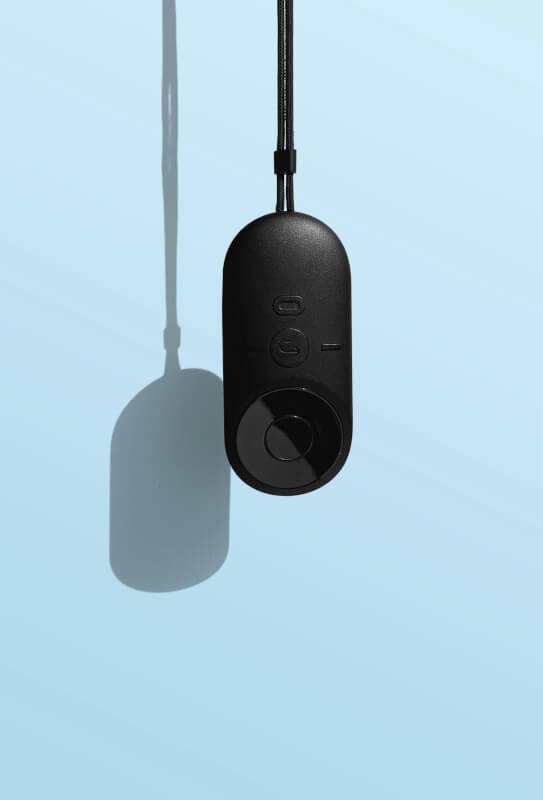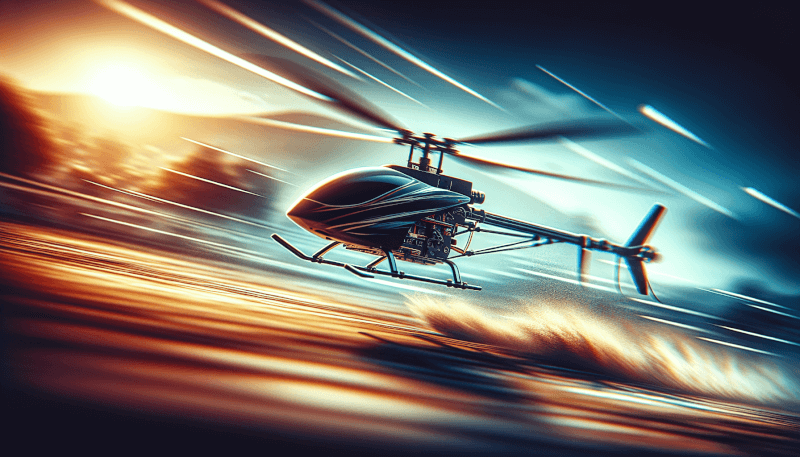So you’ve watched those thrilling RC helicopter races and you’re itching to get in on the action? Well, look no further because this article is your ultimate guide on how to get started in RC helicopter racing. Whether you’re a complete beginner or have some experience in remote control flying, we’ll walk you through the essential steps to enter the world of adrenaline-pumping races. From choosing the right helicopter to mastering the controls, from finding a racing club to practicing your skills, we’ll provide you with all the necessary tips and tricks to kickstart your journey in RC helicopter racing. So buckle up and prepare to soar through the thrilling world of aerial competition!
Choosing the Right RC Helicopter
Know the Different Types
When it comes to choosing the right RC helicopter, it’s important to first familiarize yourself with the different types available. There are various designs and sizes to choose from, ranging from micro helicopters to large-scale models. Understanding the different types will help you determine which one is most suitable for your needs and preferences. Some common types include fixed pitch, collective pitch, and coaxial helicopters.
Consider Your Skill Level
Another important factor to consider when choosing an RC helicopter is your skill level. If you are a beginner, it is best to start with a simpler and more stable model that is easy to control. As you gain more experience and confidence, you can gradually move on to more advanced models with additional features and capabilities. It’s important to match the complexity of the helicopter to your skill level to ensure a safe and enjoyable flying experience.
Look for Quality and Durability
When investing in an RC helicopter, it is recommended to prioritize quality and durability. Look for helicopters made of durable materials, such as carbon fiber or aluminum, as they are more likely to withstand crashes and accidents. Additionally, consider the reputation of the manufacturer and read reviews from other enthusiasts to ensure that the helicopter you choose is known for its reliability and longevity. Investing in a high-quality helicopter will provide you with a more enjoyable and long-lasting experience.
Investing in the Necessary Equipment
RC Helicopter Kit
To get started in RC helicopter racing, you will need to invest in a comprehensive RC helicopter kit. This kit will typically include the helicopter itself, a transmitter and receiver, batteries and chargers, and various tools and accessories. It is important to purchase a kit that is specifically designed for racing, as it will have features and components tailored for high-performance and competitive flying.
Transmitter and Receiver
The transmitter and receiver are essential components of the RC helicopter setup, allowing you to control the helicopter’s movements. When choosing a transmitter, look for one that offers intuitive controls and a comfortable grip. Consider the number of channels available as well, as it will determine the range of movements and features you can control. Additionally, ensure that the receiver is compatible with the transmitter and offers reliable signal reception for seamless control during races.
Batteries and Chargers
RC helicopters require batteries to power their motors and electronics. It is essential to invest in high-quality and reliable batteries that offer sufficient power and run time. Consider the capacity of the batteries and the charging time required to ensure that you have enough power to fly for the duration of a race. Additionally, invest in a reliable battery charger that can safely and efficiently charge your batteries, allowing you to quickly get back in the air.
Tools and Accessories
Having the right tools and accessories is essential for maintaining and repairing your RC helicopter. Invest in a set of high-quality tools, such as screwdrivers, pliers, and wrenches, that are specifically designed for RC helicopter maintenance. Additionally, consider purchasing spare parts and accessories, such as rotor blades and landing gear, as they may need to be replaced due to wear and tear or crashes. Having a well-stocked toolkit will ensure that you are prepared for any maintenance or repair needs that may arise.

Finding a Suitable Flying Location
Check Local Regulations
Before taking your RC helicopter to the skies, it’s important to check local regulations regarding flying RC aircraft. Some areas may have specific rules and restrictions, such as flying only in designated areas or adhering to certain height and distance limits. By familiarizing yourself with the local regulations, you can ensure that you fly in a legal and safe manner, avoiding any potential fines or accidents.
Look for RC Helicopter Clubs
One of the best ways to find a suitable flying location is by connecting with RC helicopter clubs in your area. These clubs often have designated flying fields or access to private areas where members can fly their helicopters. Joining a club not only gives you access to a safe and suitable flying location but also provides an opportunity to connect with experienced racers and enthusiasts who can offer guidance and support.
Select an Open and Safe Area
When choosing a flying location, it’s important to select an open and safe area that is free from obstacles and potential hazards. Look for large open fields, parks, or empty parking lots where you have plenty of space to maneuver your helicopter. Ensure that there are no power lines, trees, or other obstacles that could pose a risk during flight. Additionally, consider the weather conditions and avoid flying in strong winds or adverse weather conditions that may affect the stability and control of your helicopter.
Learning the Basic Flight Controls
Understanding the Transmitter Functions
Before taking to the skies with your RC helicopter, it’s crucial to understand the functions of the transmitter. Familiarize yourself with the various controls, switches, and knobs to know how they affect the helicopter’s movements. The transmitter will typically have controls for throttle, collective pitch, cyclic controls, and tail rotor control. Take the time to read the instructions and practice manipulating the controls without flying to gain a better understanding of how they work.
Mastering the Throttle and Collective Pitch
The throttle and collective pitch controls are two of the most important functions to master when flying an RC helicopter. The throttle controls the power of the helicopter’s motor, controlling its altitude and vertical movement. The collective pitch, on the other hand, controls the angle of the main rotor blades and is responsible for the helicopter’s forward and backward movement. Practice manipulating these controls in different scenarios, such as hovering and slow forward flights, to develop a good understanding of their effects.
Practicing Hovering and Maneuvering
Once you have a good grasp of the basic flight controls, it’s time to start practicing hovering and maneuvering with your RC helicopter. Begin by learning how to maintain a stable hover, using small adjustments to counteract any drift or movement. As you become more comfortable, start practicing basic maneuvers, such as forward and backward flights, turns, and figure-eight patterns. Gradually increase the difficulty level and practice more advanced maneuvers, such as loops and rolls, to further develop your flying skills.

Attending RC Helicopter Racing Workshops
Join Local Workshops and Events
To enhance your RC helicopter racing skills, consider joining local workshops and events specifically designed for racers. These workshops often provide valuable insights and training sessions conducted by experienced racers. They offer a great opportunity to learn from the experts and gain practical knowledge and techniques that can help improve your racing performance. Additionally, these events allow you to connect with other racers and build a supportive network within the RC helicopter racing community.
Learn from Experienced Racers
When attending RC helicopter racing workshops or events, make the most of the opportunity to learn from experienced racers. Engage in conversations, ask questions, and observe their flying techniques and strategies. Experienced racers have a wealth of knowledge and can offer valuable insights into race preparation, flying tips, and effective strategies. By learning from those who have already mastered the art of RC helicopter racing, you can accelerate your learning curve and gain a competitive edge.
Get Hands-on Training and Tips
Attending RC helicopter racing workshops often includes hands-on training and practice sessions. Take advantage of these opportunities to receive personalized guidance and feedback from experienced racers. They can provide you with specific tips and techniques tailored to your skill level and help you identify areas for improvement. These training sessions can be invaluable for honing your flying skills, perfecting your maneuvers, and building confidence as a racer.
Developing Flying Skills and Techniques
Gradually Increase the Difficulty Level
As you become more proficient in flying your RC helicopter, it’s important to gradually increase the difficulty level to continue challenging yourself. Pushing the boundaries of your skills will help you improve and become a more skilled racer. Start by attempting more complex maneuvers or increasing the speed of your flights. As you become comfortable with these new challenges, continue pushing yourself with even more advanced techniques and aerobatic maneuvers.
Practice Different Flight Maneuvers
To become a well-rounded racer, it’s important to practice and master different flight maneuvers. This includes maneuvers such as loops, rolls, inverted flights, and flips. By practicing a variety of maneuvers, you’ll develop a better understanding of your helicopter’s capabilities and limitations. Additionally, these maneuvers will help improve your precision and agility during races, allowing you to navigate through challenging racecourses with ease.
Improve Speed and Precision
In RC helicopter racing, speed and precision are key factors for success. Strive to improve both aspects of your flying skills by focusing on increasing the speed of your flights while maintaining precision movements. Practice flying at higher speeds while still performing precise maneuvers and maintaining control of the helicopter. This will help you excel in race situations that require fast and precise flying, allowing you to gain an advantage over your competitors.

Building a Supportive Network
Connect with other RC Helicopter Racers
Building a supportive network within the RC helicopter racing community is essential for your growth as a racer. Connect with other racers, both locally and online, to share experiences, seek advice, and collaborate on improving your skills. Participate in local races and events to meet fellow racers in person and form lasting connections. Having a supportive network of like-minded individuals can provide motivation, inspiration, and valuable insights as you continue to progress in your RC helicopter racing journey.
Join Online Communities and Forums
In addition to connecting with racers in your local area, it’s important to join online communities and forums dedicated to RC helicopter racing. These online platforms provide a wealth of knowledge, resources, and discussions related to RC helicopter racing. Engage with other enthusiasts, ask questions, and share your experiences to receive feedback and learn from a global community of racers. Online communities are particularly valuable for staying up to date with the latest trends, technologies, and racing techniques.
Share Experiences and Seek Advice
Actively participate in discussions and share your own experiences and insights with other racers. By sharing your successes, challenges, and lessons learned, you can contribute to the collective knowledge of the RC helicopter racing community. Additionally, don’t hesitate to seek advice and guidance from more experienced racers. Whether you have questions about specific flying techniques, equipment recommendations, or race strategies, reaching out to experienced racers can provide valuable answers and support.
Participating in RC Helicopter Races
Find Local and National Racing Events
Once you have built a solid foundation of flying skills and techniques, it’s time to participate in RC helicopter races. Research and find local and national racing events in your area. Check with local RC helicopter clubs, hobby shops, or online forums to find information about upcoming races. Participating in races will not only test your skills but also expose you to different race formats, competition, and the exhilarating atmosphere of RC helicopter racing.
Register and Pay Entry Fees
To participate in RC helicopter races, you will typically need to register and pay entry fees. Registration processes may vary depending on the event, so make sure to follow the instructions provided by the race organizers. Be mindful of any deadlines for registration and entry fees to ensure you secure your spot in the race. Paying entry fees helps support the event and contributes to the prize pool, encouraging competition and attracting more racers in the future.
Prepare and Test Your Helicopter
Before the race day, it’s crucial to thoroughly prepare and test your RC helicopter to ensure it is in optimal condition. Conduct a pre-flight inspection, checking for any loose or damaged parts, ensuring all screws and bolts are tightened, and confirming that all control surfaces are functioning properly. Test your helicopter’s performance by flying it in various conditions and maneuvers to ensure its stability and responsiveness. Being well-prepared and confident with your helicopter’s performance will significantly enhance your racing experience.

Understanding Racing Rules and Regulations
Familiarize Yourself with the Race Format
Each RC helicopter race may have its own unique format and set of rules. Familiarize yourself with the specific format of the race you are participating in. Understand the number of rounds, qualifying procedures, and the length of each race. Additionally, be aware of any specific race requirements, such as the type of helicopters allowed or any mandatory safety measures. Understanding the race format will help you strategize and plan your flights accordingly, maximizing your chances of success.
Learn about Safety Protocols
Safety is of utmost importance in any RC helicopter race. Familiarize yourself with the safety protocols established by the race organizers. Understand the designated safety zones, flight boundaries, and emergency procedures in case of accidents or malfunctions. Adhering to safety protocols not only ensures the well-being of all participants but also helps create a positive racing environment where everyone can enjoy the thrill of competition without unnecessary risks.
Follow Race Etiquette
RC helicopter racing is not only about individual performance but also about sportsmanship and respect for fellow racers. It is important to maintain good race etiquette throughout the event. Respect the racing line of other participants, avoid reckless maneuvers that may jeopardize the safety of others, and be courteous during interactions with other racers. Foster a positive and supportive atmosphere by celebrating the achievements of fellow racers and offering encouragement and congratulations, regardless of the outcome of the race.
Continuously Learning and Improving
Seek Feedback from Experts
To continuously improve as an RC helicopter racer, seek feedback from experts in the field. Connect with experienced racers or trainers who can provide constructive criticism and advice based on their knowledge and expertise. Request a performance evaluation of your flights and maneuvers, and ask for specific recommendations on areas where you can improve. Receiving feedback from experts will help you identify strengths and weaknesses, allowing you to focus your efforts on targeted skill development.
Analyze and Reflect on Your Performance
After each race or practice session, take the time to analyze and reflect on your performance. Review video recordings, if available, to observe your flying techniques and identify areas for improvement. Take note of any recurring mistakes or challenges you faced during the race. Reflect on your decision-making process and race strategies to identify ways to optimize your performance in the future. By evaluating your performance critically, you can pinpoint areas to focus on and continuously refine your skills.
Experiment with Different Strategies
As you gain more experience in RC helicopter racing, don’t be afraid to experiment with different strategies and flying techniques. Push the boundaries of your comfort zone and try new approaches in races or practice flights. Experimenting with different strategies will help you discover what works best for you and allow you to adapt to different race environments and challenges. Embrace a mindset of continuous learning and improvement, and never shy away from experimenting and evolving your racing techniques.
As you embark on your RC helicopter racing journey, remember that it is a progressive and skill-based hobby. Patience, practice, and perseverance are key to becoming a skilled and successful racer. Enjoy the process of learning and improving, and embrace the camaraderie of the RC helicopter racing community. With dedication and a passion for flying, you will be well on your way to becoming an accomplished RC helicopter racer.



